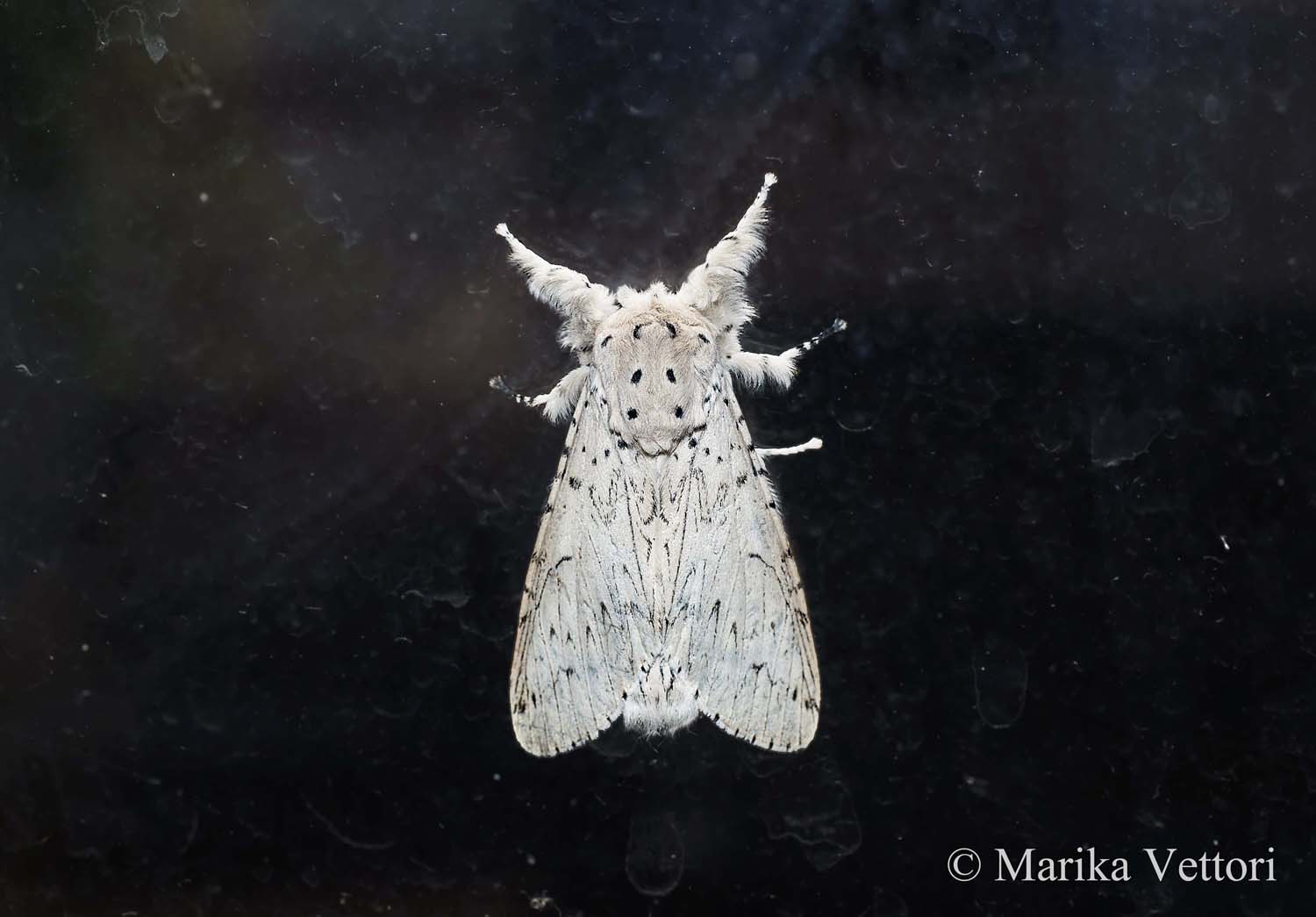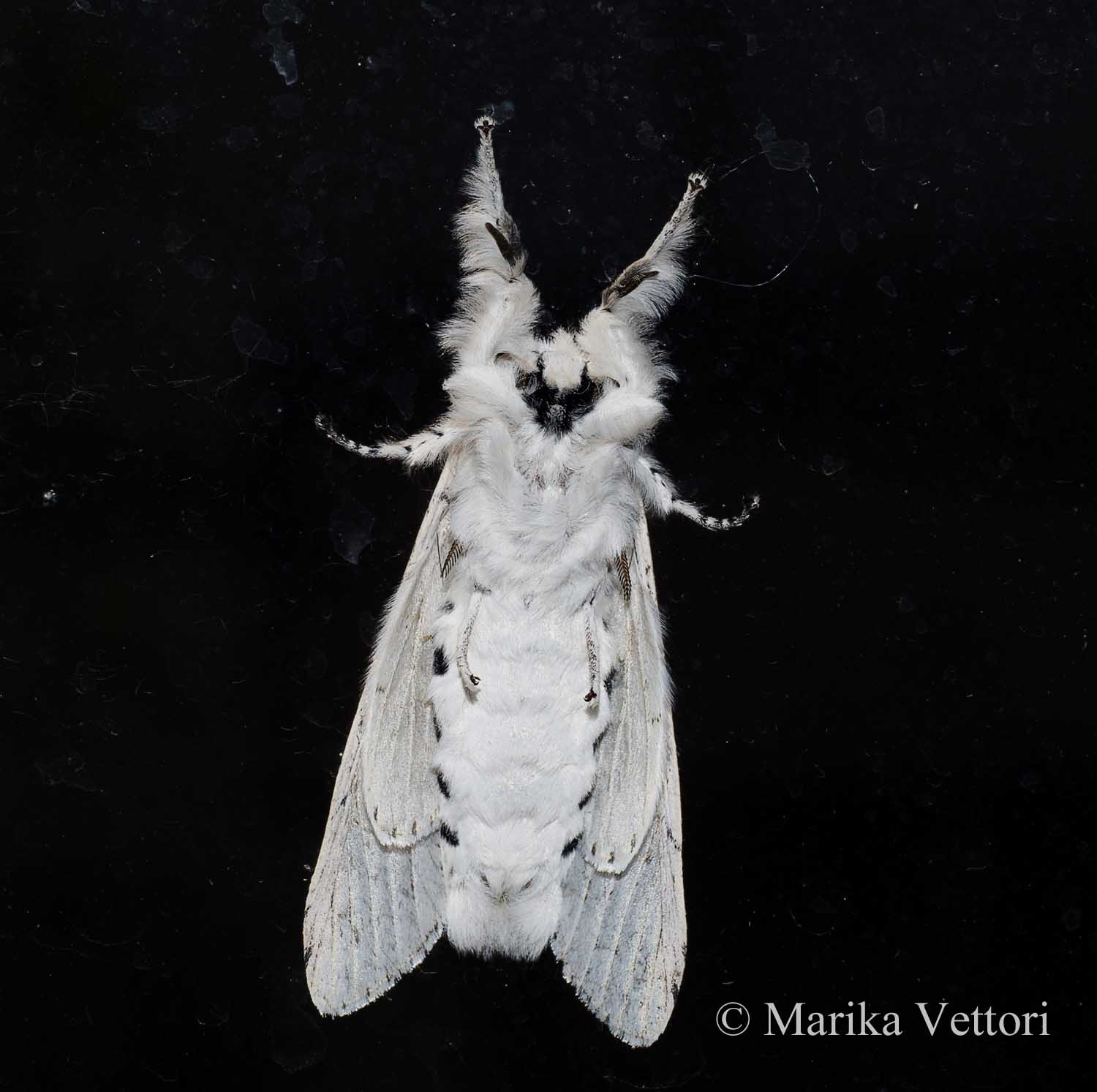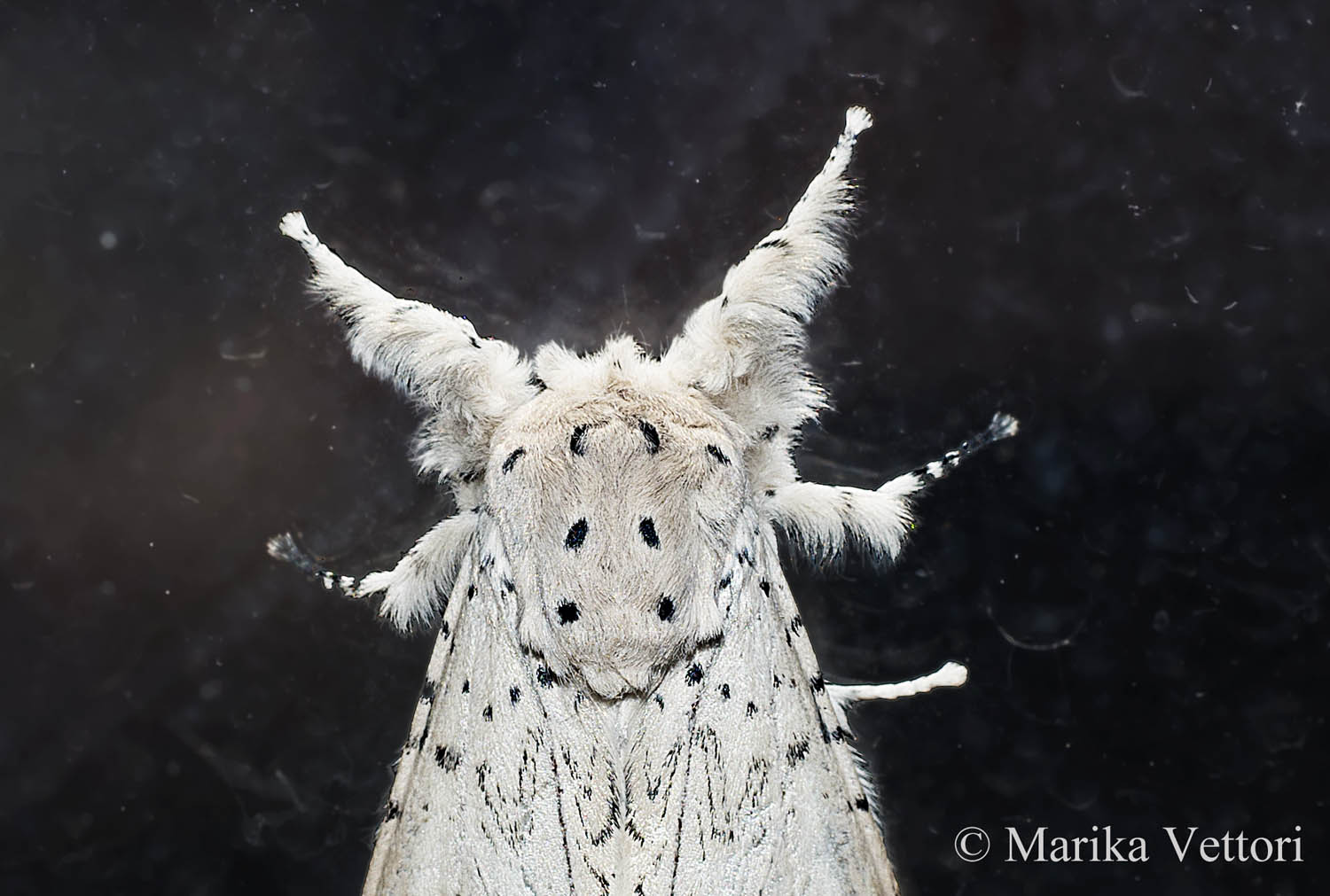Cerura (Apocerura) erminea
(Esper, [1783])
-
 Subfamily: Notodontinae, Dicranurini
Subfamily: Notodontinae, Dicranurini -
 Wingspan: 55-75 mm
Wingspan: 55-75 mm -
 Flight period: Apr - Jul
Flight period: Apr - Jul -
 Spread: Common
Spread: Common -
 Host plants: Populus sp., Salix sp.
Host plants: Populus sp., Salix sp.
Information
The Cerura erminea is a moth of the Notodontidae family with a wingspan of 55-75 mm.
It is found in almost all of Europe, with the exception of Portugal, the United Kingdom, Ireland, Iceland, southern and northern European Russia, Norway and Sweden.
Its range extends to western Asia and Iran.
Islands are absent in Italy *.
The front wings of the Cerura erminea are narrow, light gray in color on which the black veins stand out.
On the border a series of black points are visible in the intervenal spaces.
Similar to the congener Cerura vinula it can be distinguished from the latter by the absence of yellowish shades along the veins and by the presence of a large black band
on the upper part of the abdomen.
The hind wings are rounded and almost the same color as the front ones, but with slightly less intense veins.
Head white, thorax white with large black points, the abdomen in the upper part is black with a whitish central line up to two to about two thirds per
then turn white with black streaks at the end. Head, thorax and abdomen are provided with an intense down. **
The Cerura erminea lives in wooded areas or on the edge of the same. In Italy it is present everywhere. It prefers mostly humid habitats where larval plants abound.
The Cerura erminea is univoltine, the adult flies from April to July, and can often be encountered even in the sunlight. ***
It overwinters at the pupa stage.
The eggs are lenticular, yellow - reddish/orange dotted with brown/dark brown, lighter in the center and with a white border. **
The bright green caterpillar with the dorsal part of the reddish-brown color, blends very well between the willow and poplar leaves, on which it feeds.
The last pair of pseudo-legs is modified into defense organs with the shape of large fleshy horns from which a whip-like filament protrudes for intimidation.
It can also splash formic acid from a gland on your chest if you continue to disturb it.
**
The chrysalis is brown / dark brown in color. It is found inside a silky cocoon covered with plant residues, attached and well camouflaged to the branches of the host plant. **
The host plants of this moth are: Populus tremula, Populus sp. Salix sp. and Fraxinus sp., with preference for Populus sp ..
* Lepidoptera mundi https://lepidoptera.eu/ - Fauna Europea https://fauna-eu.org/
** Bestimmungshilfe für die in Europa nachgewiesenen Schmetterlingsarten - http://lepiforum.de/
*** Roland Robineau, Guide de papillons nocturne de France, Delachaux et Niestlé, 2011 p. 90







 EN
EN ITA
ITA
Social and publications